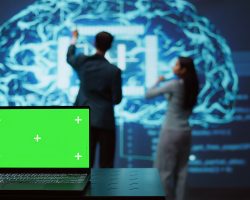Treatment approaches for NVLD and ADHD

Introduction to NVLD and ADHD
Nonverbal Learning Disorder (NVLD) is possibly the most misunderstood and tricky-to-diagnose neurological disorder. Both NVLD and Attention Deficit Hyperactivity Disorder (ADHD) share some symptoms, but they arise from different biological brain-based differences. So, how can you differentiate between the two, and how can you ensure that you or your child receives the correct diagnosis and treatment?
Prevalence of NVLD and ADHD
ADHD is one of the most commonly diagnosed childhood disorders, affecting an estimated 5 to 8 percent of school-age children. In contrast, NVLD is much rarer, with estimates suggesting it affects less than 1 percent of the population. Individuals with both NVLD and ADHD often face challenges with attention, following directions, memory, and executive functioning skills. These difficulties can impact organization, time management, academic performance, social interactions, and daily life.
Key Differences Between NVLD and ADHD
While both disorders can create significant challenges, there are critical differences:
- ADHD Symptoms: Characterized by inattention, hyperactivity, and impulse control issues.
- NVLD Symptoms: Characterized by difficulties with nonverbal communication and visual-spatial skills. Poor visual-spatial skills may lead to problems with math, coordination, balance, and activities like swimming or playing sports.
Individuals with NVLD also struggle to process nonverbal communication cues, such as body language, facial expressions, gestures, sarcasm, tone of voice, and jokes. As a result, they often rely heavily on spoken language, interpreting it literally, which can lead to misunderstandings and perceptions of rigidity in their viewpoints and behaviors.
Diagnosis and Treatment
Because NVLD is not officially recognized in the Diagnostic and Statistical Manual of Mental Disorders (DSM), it is often mistaken for ADHD. If you or your child show signs of either disorder, seeking out a neuropsychologist experienced with NVLD is crucial for obtaining an accurate diagnosis and implementing appropriate treatments.
Treatment Approaches: There is no one-size-fits-all solution for NVLD. While some ADHD interventions may benefit those with NVLD, they are not comprehensive. Treatment options for ADHD often include behavior therapy and medication, whereas NVLD may require a combination of educational, occupational, speech-language, and psychological therapies. These interventions can help individuals learn to manage their challenges, improve functioning, and lead more productive and fulfilling lives.
About Linda Karanzalis
Linda Karanzalis, a Board-Certified Cognitive Specialist, is the author of Misnamed, Misdiagnosed, Misunderstood, a new book on NVLD and other brain-based challenges.
Dr. Ned Hallowell, a renowned psychiatrist and ADHD expert, praises Linda’s work, stating, “Linda’s book is vivid, compelling, full of heart and fresh understanding. Karanzalis replaces suffering with clarity and triumph for the millions of people with NVLD.”
With over 25 years of experience, Linda has worked with individuals of all ages facing NVLD, ADHD, learning disabilities, and those on the autism spectrum. As an author, podcaster, presenter, and ambassador for the NVLD Project, she offers validation, awareness, strategies, and compassion to the millions living with neurodiversity.
Find out more about Linda’s journey and her book at www.lindakaranzalis.com.
Follow Linda Karanzalis through her social media accounts:

Join the NVLD and NeuroDivergent Facebook Support Group
 Linda Karanzalis, MS
Linda Karanzalis, MS
Linda Karanzalis, MS, is a former special education classroom teacher with over 25 years of experience in the areas of learning disabilities, ADHD, social-emotional learning, social skills training, and behavior management














